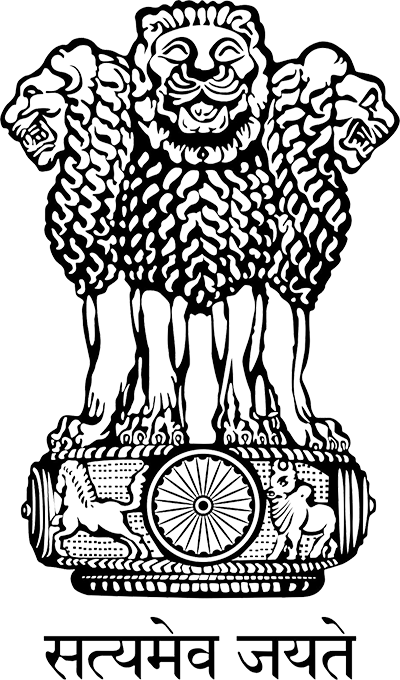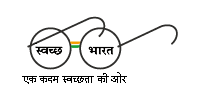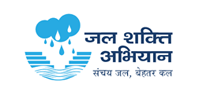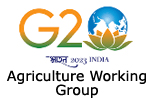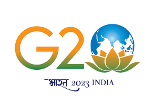1.National Mission for Sustainable Agriculture (NMSA)
NMSA is envisaged as one of the eight Missions outlined under National Action Plan on Climate Change (NAPCC), NMSA aim at promoting Sustainable Agriculture through climate change adaptation measures. The major thrust is enhancing agriculture productivity especially in rainfed areas focusing on integrated farming, soil health management, and synergizing resource conservation. Besides, NMSA also a committed target to fulfil National and International commitments on Sustainable Development Goals (SDG) & Intended Nationally Determined Contribution (INDC). All the components of NMSA such as Rainfed Agriculture, Soil Health Management, Organic Farming, etc. have significant role in achieving SDGs & INDC.
NMSA as a programmatic intervention caters to Mission Deliverables that focuses mainly on conservation agriculture to make farm sector more productive, sustainable, remunerative and climate resilient by promoting location specific integrated/composite farming systems; soil and moisture conservation measures; comprehensive soil health management and mainstreaming rainfed technologies.
NMSA has one of the components of Rainfed Area Development being implemented by RFS division.
Rainfed Area Development (RAD) :
RAD focuses on Integrated Farming System (IFS) for enhancing productivity and minimizing risks associated with climatic variability’s. Under this system, crops/ cropping system is integrated with activities like horticulture, livestock, fishery, agro-forestry, apiculture etc. to enable farmers not only in maximizing farm returns for sustaining livelihood, but also to mitigate the impacts of drought, flood or other extreme weather events with the income opportunity from allied activities during crop damage.
For the Year 2022-23 (B.E), budget provision of Rs. 200.15 crore has been made for implementation of the programme. Evaluation of RAD Scheme was taken up by the NITI Aayog during 2019-20. The study report indicated that:
(i) RAD is an important component of NMSA which aims to encourage diversified integrated farming in rainfed areas. RAD encourages cluster based approach and promotes an integrated approach which promotes integrate nutrient management, soil health, diversified farming, post-harvest interventions and marketing. Within RAD, there is significant stress on Dairy, poultry, horticulture, fisheries and agroforestry activities.
(ii) The scheme is quite relevant as it adopts an area based approach for development and conservation of natural resources along with farming systems. It was formulated on ‘watershed plus framework’ to explore potential utilization of natural resources developed through watershed development and soil conservation activities/interventions. It aims to promote integrated farming system by focusing on multi-cropping, crop rotation and allied activities like livestock, apiculture etc. Integrated farming systems helps in minimizing adverse impact of crop failure through diversified systems.
(iii) Overall the programme has achieved only 75% of its targets from 2014-2019.
(iv) In terms of output indicators, the scheme has achieved about 75% of its target for “Total area brought under Integrated Farming System”, about 82% of the target of” Areas where farmers integrated livestock into cropping system” and about 68% of the training target. Analysis of MIS data indicates delay in release of first and second instalment to States.
(v) There is a large variability in the progress of the scheme in different States. While states such as Tamil Nadu, UP, Andhra Pradesh, Maharashtra, Chhattisgarh and Odisha have received substantial funds, however state such as Rajasthan has not received funds since 2015-16.
(vi) The scheme has a large basket of interventions but majority of funds are spent on integrated farming based interventions. Among the scheme components, about 90% of funds are utilized on integrated farming.
(vii) Landless farmers are not being covered under the scheme. They can also provide support for interventions such as bee keeping. This would increase the effectiveness of the scheme.
-
RAD is an important component of NMSA which aims to encourage
diversified integrated farming in rainfed areas. RAD encourages
cluster based approach and promotes an integrated approach which
promotes integrate nutrient management, soil health, diversified
farming, post-harvest interventions and marketing. Within RAD, there
is significant stress on Dairy, poultry, horticulture, fisheries and
agroforestry activities.
-
The scheme is quite relevant as it adopts an area based approach for
development and conservation of natural resources along with farming
systems. It was formulated on ‘watershed plus framework’ to explore
potential utilization of natural resources developed through
watershed development and soil conservation
activities/interventions. It aims to promote integrated farming
system by focusing on multi-cropping, crop rotation and allied
activities like livestock, apiculture etc. Integrated farming
systems helps in minimizing adverse impact of crop failure through
diversified systems.
-
Overall the programme has achieved only 75% of its targets from
2014-2019.
-
In terms of output indicators, the scheme has achieved about 75% of
its target for “Total area brought under Integrated Farming System”,
about 82% of the target of” Areas where farmers integrated livestock
into cropping system” and about 68% of the training target. Analysis
of MIS data indicates delay in release of first and second
instalment to States.
-
There is a large variability in the progress of the scheme in
different States. While states such as Tamil Nadu, UP, Andhra
Pradesh, Maharashtra, Chhattisgarh and Odisha have received
substantial funds, however state such as Rajasthan has not received
funds since 2015-16.
-
The scheme has a large basket of interventions but majority of funds
are spent on integrated farming based interventions. Among the
scheme components, about 90% of funds are utilized on integrated
farming.
-
Landless farmers are not being covered under the scheme. They can
also provide support for interventions such as bee keeping. This
would increase the effectiveness of the scheme.
The details of allocation during 2022-23, releases (Central Share),
and area covered under RAD since inception up to 2020-21 are as under:
Click for Allocation for 2022-23 (Central share) under RAD (Allocation RAD 2022-23) Download (303 KB)
 Publish Date: 21-06-2022
Publish Date: 21-06-2022
Click for Details of Central share released under IFS from 2014-15
to 2020-21 Download (372 KB)
 Publish Date: 21-06-2015
Publish Date: 21-06-2015
Click for Details of Area covered under RAD from 2014-15 to
2020-21 Download (466 KB)
 Publish Date: 21-06-2015
Publish Date: 21-06-2015
Click for OPERATIONAL GUIDELINES RAINFED AREA DEVELOPMENT (RAD) COMPONENT Download (663 KB)
 Publish Date: 23-03-2023
Publish Date: 23-03-2023
Click for Operational Guidelines of National Mission for Sustainable Agriculture (NMSA) Download (6.08 MB)
 Publish Date: 21-06-2014
Publish Date: 21-06-2014
Besides, MIS,
nmsa.dac.gov.in
has been developed for monitoring the implementation of the Programme.
2. Per Drop More Crop (PDMC): Department of Agriculture, Cooperation & Farmers Welfare is implementing - PDMC which is operational in the country from 2015-16. The PDMC focuses on enhancing water use efficiency at farm level through Micro Irrigation viz Drip and Sprinkler Irrigation System. Besides promoting micro Irrigation, this component also supports micro level water storage or water conservation/management activities as Other Interventions to supplement source creation for Micro Irrigation.
From the year 2022-23 the PDMC is to be implemented under RKVY-RAFTAAR scheme (Rashtriya Krishi Vikas Yojana- remunerative Approaches for Agriculture and Allied Sector Rejuvenation).
Micro Irrigation:
(i) Micro Irrigation technologies viz. drip and sprinkler irrigation is a proven technology which has gained immense popularity amongst the farmers in India. Micro irrigation not only helps in water saving, but also in reducing fertilizer usage, labor expenses, and other input costs and enhancing farmers’ income. With this technology, additional area can be irrigated with the same amount of water compared to conventional method of irrigation. In addition, water deficient, cultivable waste land and undulating land areas can easily be brought under cultivation due to ease of irrigation.
(ii) Evaluation of PDMC Scheme taken up by the NITI Aayog during 2019-20. The study report indicated that: -
(a) The scheme is relevant in achieving national priorities such as substantially improving on- farm water use efficiency, enhancing crop productivity, generating employment opportunities etc.
(b) The scheme has been quite effective in terms of showing benefits (e.g. increase in productivity; reduction in fertilizer consumption, water consumption, power consumption etc.)
(c) Impact of this scheme has been realized in terms of increase in farmer’s income, employment generation and water savings.
(d) Micro irrigation adoption has helped to save water. Saving of water across various states are around 30 to 70% in various States.
(e) Income of farmers has increased in the range of 10% to 69%.
(f) Water use efficiency has improved around 30% to 70%.
(g) Created direct and indirect employment opportunities.
(iii) The positive outcomes of micro irrigation have made food security effective due to increase in production and productivity of different crops and increased area under irrigation from the same source of water resulting in enhanced nutritional security for the country.
Sequence of schemes on Micro Irrigation:
Since January 2006, the Government of India has been implementing Centrally Sponsored Scheme on Micro Irrigation with the objective to enhance water use efficiency in the agriculture sector. Under the scheme, technological interventions like drip & sprinkler irrigation systems are promoted to encourage the farmers to use them for conservation and saving of water & improved yield.
In June 2010, the scheme was up-scaled to National Mission on Micro Irrigation (NMMI), which continued till the year 2013-14. From 1st April 2014, NMMI was subsumed under National Mission on Sustainable Agriculture (NMSA) and implemented as one of the components under “On Farm Water Management” (OFWM) during 2014-15.
From 1st July 2015, the scheme has been subsumed under Pradhan Mantri Krishi Sinchayee Yojana (PMKSY) and implemented as ‘Per Drop More Crop’ component of PMKSY.
From the year 2022-23 the PDMC is to be implemented under RKVY-RAFTAAR scheme (Rashtriya Krishi Vikas Yojana- remunerative Approaches for Agriculture and Allied Sector Rejuvenation).
Click here for year wise Central Assistance released under PMKSY-
Per Drop More Crop Download (268 KB)
 Publish Date: 21-02-2018
Publish Date: 21-02-2018
Click here for Micro Irrigation Area coverage through Centrally
Sponsored Schemes. Download (303 KB)
 Publish Date: 21-02-2022
Publish Date: 21-02-2022
Click here for State wise Allocation of Central Assistance for 2022-23 under PMKSY-Per Drop More Crop (Allocation 2022-23) Download (65 KB)
 Publish Date: 21-02-2022
Publish Date: 21-02-2022
Micro Irrigation Fund
A dedicated Micro Irrigation Fund created with NABARD has been
approved with an initial corpus of Rs. 5000 crore (Rs. 2000 crore for
2018-19 & Rs. 3000 crore for 2019-20) for encouraging public and
private investments in Micro irrigation. The main objective of the
fund is to facilitate the States in mobilizing the resources for
expanding coverage of Micro Irrigation. MIF would not only facilitate
States in incentivizing and mobilizing resources for achieving the
target envisaged under PMKSY-PDMC but also in bringing additional
coverage through special and innovative initiatives by State
Governments.
Click here for Operational Guidelines of Micro Irrigation Fund (MIF) Download (275 KB)
 Publish Date: 21-06-2018
Publish Date: 21-06-2018
Click her for Micro-Irrigation (MIF) Project-wise Status Download (362 KB)
 Publish Date: 21-06-2017
Publish Date: 21-06-2017

